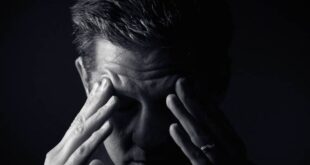Getting help for depression Depression. Even though it may seem hard, it is important to talk with someone that you trust about how you feel. You could talk with a parent, teacher, school counsellor, family member or friend. A general practitioner (GP) is another good place to start when seeking …
Read More »When is anxiety a mental health problem?
When is anxiety a mental health problem? Anxiety can become a mental health problem if it impacts your ability to live your life as fully as you want to. For example, it may be a problem if:– your feelings of anxiety are very strong or last for a long time,– …
Read More »Anxiety and depression
Anxiety and depression. It is not uncommon for children to be diagnosed with both depression and an anxiety disorder, or depression and general anxiety. About half of people diagnosed with depression are also diagnosed with an anxiety disorder. https://therapyforanxiety.org/social-anxiety-disorder/ Social anxiety disorder Children with depression may display these symptoms:• Depressed …
Read More »Social anxiety disorder
Social anxiety disorder. Social anxiety disorder, or social phobia, is characterized by an intense fear of social and performance situations and activities. This can significantly impair your child’s school performance and attendance, as well as the ability to socialize with peers and develop and maintain relationships. Other symptoms include the …
Read More »Posttraumatic stress disorder (PTSD)
Posttraumatic stress disorder (PTSD). Children with posttraumatic stress disorder, or PTSD, may have intense fear and anxiety; become emotionally numb or easily irritable; or avoid places, people, or activities after experiencing or witnessing a traumatic or life-threatening event. These events can include a serious accident, violent assault, physical abuse, or …
Read More »Panic disorder
Panic disorder. Panic disorder is diagnosed if your child suffers at least two unexpected panic or anxiety attacks—which means they come on suddenly and for no reason—followed by at least one month of concern over having another attack, losing control, or “going crazy.” https://therapyforanxiety.org/the-treatment-of-agoraphobia/ THE TREATMENT OF AGORAPHOBIA A panic …
Read More »THE TREATMENT OF AGORAPHOBIA
THE TREATMENT OF AGORAPHOBIA. Beginning in the 1960s a variety of behavioral treatments for agoraphobia were investigated including systematic desensitization, and imaginal flooding, in addition to prolonged in vivo exposure. Of these, in vivo exposure is clearly superior. Systematic desensitization, developed by Wolpe(1958), involves having the patient construct a hierarchy …
Read More »Agoraphobia
Agoraphobia. Agoraphobia, also referred to as panic disorder with agoraphobia, is the most common and among the most debilitating of the anxiety disorders among adults. Although the issue is far from settled, agoraphobia appears to be a more severe form of panic disorder. It is also the most frequently reported …
Read More »Panic Disorder of anxiety
Panic Disorder of anxiety. The distinguishing feature of panic disorder is the presence of abrupt and frequently unexpected disturbances involving symptoms such as palpitations, sweating, tingling, chest pain, shortness of breath, dizziness, nausea, depersonalization, numbness, and hot flashes or chills. Patients frequently experience fears of dying, going crazy, or behaving …
Read More »THE TREATMENT OF GENERALIZED ANXIETY DISORDER
THE TREATMENT OF GENERALIZED ANXIETY DISORDER. Three general treatment approaches have been applied to the problems of chronic anxiety and generalized anxiety disorder. The oldest and still most widely used approach is to provide psychological support and reassurance toanxious patients in conjunction with attempts to help them understand the origins …
Read More » Therapy for anxiety Therapy for anxiety
Therapy for anxiety Therapy for anxiety









